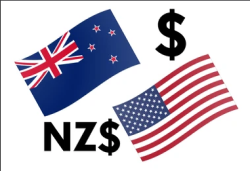
Flexity Analysis for NZDUSD
Forecast Overall(Short-Term, Long-Term): ST=Strong Down LT=Undecided
Forecast Methods(Short-Term, Long-Term):
[Method0] ST=Down LT=Up
[Method1] ST=Down LT=Same
[Method2] ST=Down LT=Down
FlexityIndicator Analysis Method(0)
Short-Term: The price of NZDUSD is expected to **go down** in the short term. **Reasoning:** - Context 2 highlights a bearish outlook with potential decline if support at 0.6420 is broken, aligning with the Extract's RSI bearish signals. - Technical analysis suggests difficulty breaking resistance levels, pointing towards a downtrend. - While there are positive fundamental factors, the overall technical indicators and market sentiment lean towards a downward movement. **Conclusion:** The short-term outlook for NZDUSD is bearish. Long-Term: Based on the analysis of the provided information, the long-term expectation for the NZDUSD pair is that it will either remain stable or experience a slight upward trend. This conclusion considers both potential scenarios (bullish and bearish) but leans towards the slightly bullish forecast due to factors like foreign investment and global economic conditions. Therefore, the price is expected to stay the same or go up in the long term. **Answer:** The NZDUSD price is expected to either remain stable or experience a slight upward trend in the long term.
Result: [Method0] ST=Down LT=Up
FlexityIndicator Analysis Method(1)
Short-Term: Based on the analysis of the provided information, the NZDUSD pair is expected to **go down** in the short term. This conclusion is drawn from the bearish market sentiment, overbought RSI indicating potential correction, and support/resistance levels suggesting a downward trend despite short-covering activities. Long-Term: **Analysis of NZD/USD Price Outlook:** Based on the provided information, the analysis suggests that the NZD/USD pair reached a 3-month high in March 2025, indicating positive momentum and potential gains under stable conditions. Additionally, risk-on sentiment favoring commodity exporters like New Zealand could support further appreciation of the NZD. However, there are countervailing factors to consider. A potential strengthening of the USD, as suggested by Goldman Sachs, might weaken the NZD/USD pair. Furthermore, the impact of a stronger Canadian Dollar could indirectly affect the USD and, by extension, the NZD/USD relationship. Given these opposing forces—positive market sentiment and momentum versus potential USD strength—the long-term outlook appears mixed. It is likely that these factors will balance each other out, leading to a neutral price trajectory where the pair remains stable over time. **Conclusion: The price for NZD/USD is expected to remain stable in the long term.**
Result: [Method1] ST=Down LT=Same
FlexityIndicator Analysis Method(2)
Short-Term: The short-term expectation for NZDUSD is for it to **go down**. This conclusion is based on the anticipation of further rate cuts by the Reserve Bank of New Zealand, which would likely weaken the NZD, and the ongoing economic challenges faced by New Zealand despite a slight appreciation post-data release. Long-Term: The long-term expectation for the NZD/USD pair is that its price is expected to **go down**. This conclusion is based on the fragile economic recovery in New Zealand, potential further Reserve Bank of New Zealand rate cuts, and broader market dynamics indicating ongoing pressure on the NZD due to economic weaknesses.
Result: [Method2] ST=Down LT=Down
